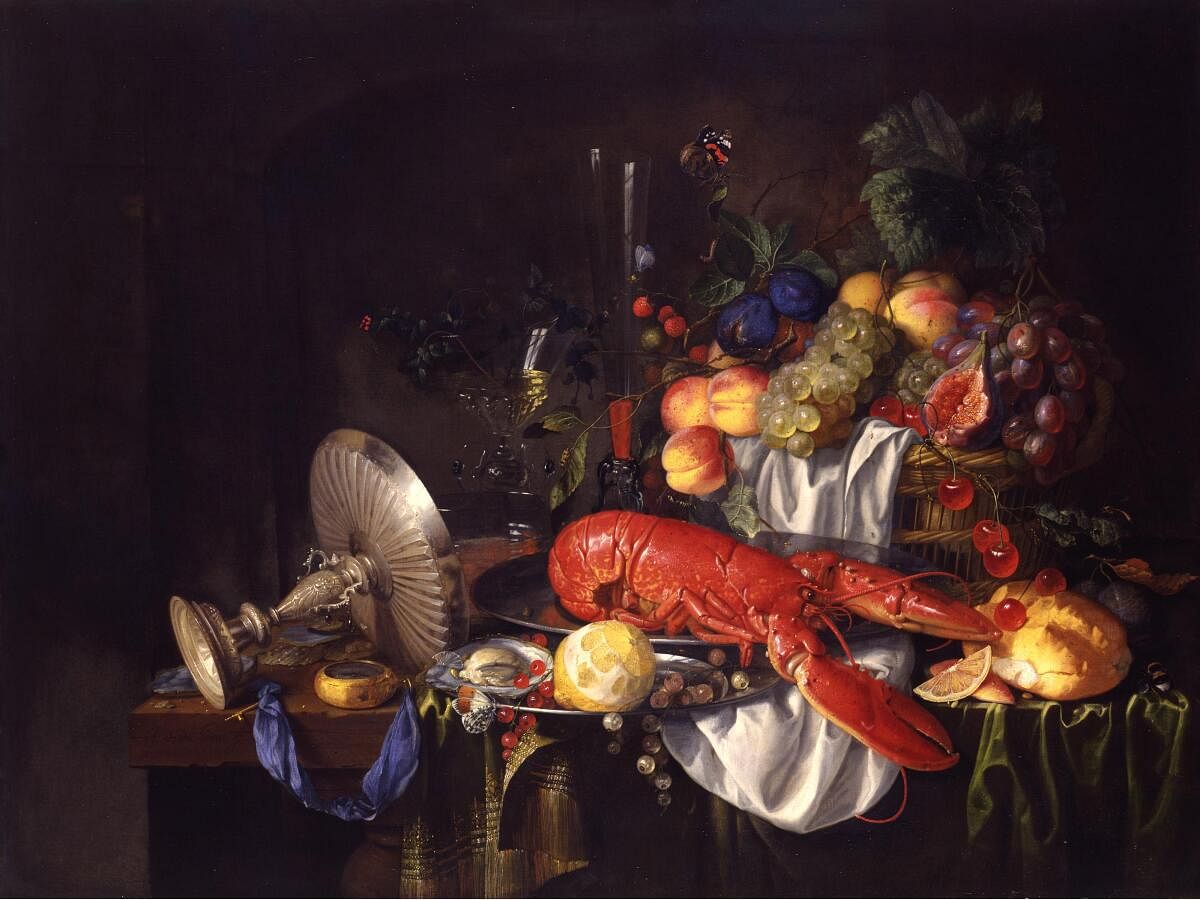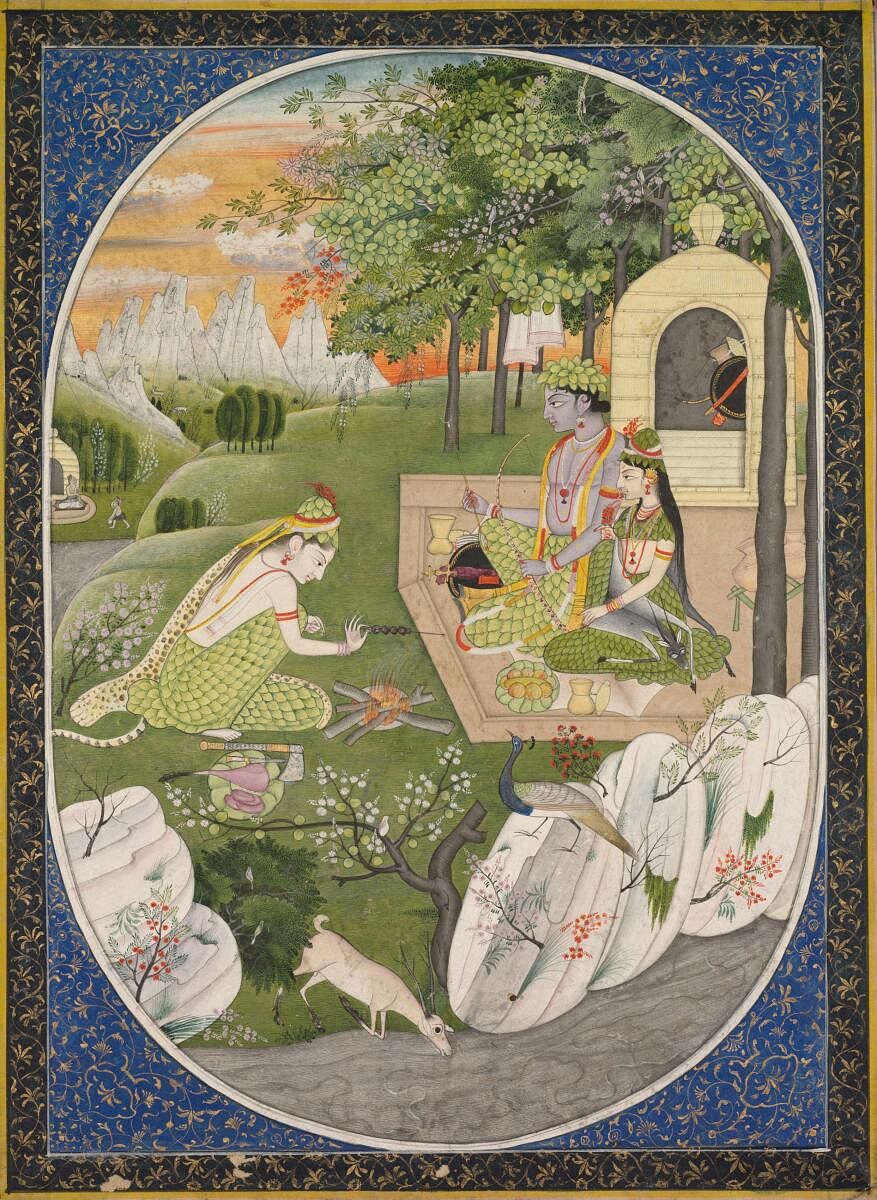

Food is transient. So is art. Food that we love is also imperishable. So is art that speaks to us. Both have the power to transcend space and time and lodge themselves deep in our amygdala and hippocampus, the areas in our brain responsible for emotion and memory.
Thus, it should surprise no one that the depiction of food in art and design not only dates back to prehistoric times but the practice also spans cultures — from drawings at the Bhimbetka rock shelters to frescoes at the Ajanta caves; from patterns in Egyptian pyramids to mosaics of ancient Greek and Roman civilisations. Food is often found in textiles (the mango and pomegranate motifs, for instance) as well as in temple art.
Art and food have always nourished and enriched each other, says art historian, curator, and visual artist Suresh Jayaram. Remember Andy Warhol’s famous ‘Campbell Soup’ installation that took a dig at rampant consumerism, or even the Dutch still-life artists who routinely depicted tables groaning under a lobster-cheese-and-fruit excess to comment on gluttony and greed? The good news is artists have taken it a step further in recent times. A significant number of modern artists are increasingly employing food in their art design as a means to explore deeper sociocultural, political, and environmental concerns.
Well-known contemporary artist Subodh Gupta says he uses food as a “potent symbol for sparking dialogue and reflection on issues such as global inequality, sustainability, and the politics of consumption.” Gupta, who senior art curator Giridhar Khasnis credits for “single-handedly raising the importance of cooking utensils among international audiences”, is best known for his life-size installations out of used steel and aluminium utensils — the good-old patre.
At one such performative installation at the Art Basel in Zurich a few years ago, Gupta took gastronomic art — its domesticity and simplicity — to a new level by also cooking traditional regional dishes and serving his guests inside a walled hut that housed the installation. At the height of the pandemic, the Bengaluru-based Museum of Art & Photography (MAP) hosted an exhibition ‘Stories on a banana leaf’, which not only looked at the deep connections between food, art, and history but also at consumption as a marker of identity. For instance, the painting of a nayika dancing while surrounded by chillies is a celebration of the chilli harvest season in Rajasthan; the accompanying text and recipes trace the spice’s journey from Portugal to India.
Jayaram tells us of an 1830 miniature painting of Rama, Sita, and Lakshmana barbequing meat in the forest — an imagery that would not sit well with many in India today, where caste, religion, and food-related debates are an everyday affair.
While appreciating the recent surge in the number of artworks that are designed around food, Arnika Ahldag, chief curator of MAP, cautions artists against crossing the thin line between performance and gimmickry when employing food as a material in art design. Her comment brings to mind an incident in Miami in 2019, where a banana duct-taped to a wall (and sold for around Rs 98 lakh) was munched up by an onlooker (who happened to be another artist), much to the bewilderment of the gallery visitors!
That said, a bit of contrivance for the cause of the greater good can be forgiven — especially if the cause is breaking down the barrier of elitism art has built around itself and making it accessible to less-privileged communities. This is exactly contemporary artist H G Arunkumar’s endeavour. Hailing from a farming family in Shivamogga, Arunkumar addresses environmental issues through his art at the SARA (Sustainable Alternatives for Rural Accord) centre he has opened at his ancestral farm where art installations, seed banks, and community-based art and design workshops co-exist.
The centre houses more than 250 varieties of rice. “What better art than this!” says Arunkumar, adding that food is not just about what we eat but also about where it comes from and who produces it. “Art has to be relatable for a community to interact with it and what better medium than food to make it so?” he asks. He agrees though that tokenism around food design will not take us too far.
On the lighter side, are young artists like Sarasvathy T K whose hyper-realistic paintings of Indian food are popular on social media. Sarasvathy says while she was initially inspired by the Dutch and Baroque still-life painters, she soon found her niche in sambar-dosa and garlic naan! Another young Chennai-based artist Varuna Sridhar found instant fame on social media when she put up her hyper-realistic painting of a typical south-Indian steaming cup of filter kaapi. “Food is joy, food is wholesomeness and when the boundaries between art and food are blurred, it becomes a metaphor for life itself,” says Sarasvathy.
Perhaps artists revisiting food both as a material and as a subject is reflective of the vexing times we live in — we require not just the spiritual sustenance that the beauty of food provides but we also need hard-hitting artworks that push us to think about hunger, waste and the ugly politics around food.